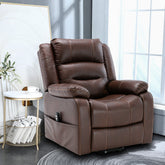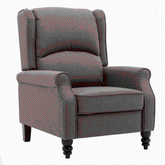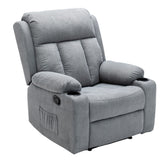Steel Wood Furniture: The Perfect Blend of Durability and Style for South African Homes
Understanding the South African Wood Furniture Market
The Popularity of Wood Furniture in South Africa
Wood furniture is a favorite in South African homes. It adds warmth and natural beauty to any room.

Many people love local woods like yellowwood and stinkwood. These are strong and last a long time.
Imported woods such as oak and pine are also common choices. The harsh South African climate can be
tough on wood. This makes proper care very important. Many families pass down wooden pieces through
generations. This tradition gives the furniture extra meaning. As a result, wood remains a key part
of South African home design. It fits well in both modern and traditional homes. The wide range of
woods available suits different tastes and budgets.
Why Proper Care is Essential for Longevity
Taking good care of wood furniture is crucial in South Africa. The country's varied climate poses
unique challenges. Coastal areas have high humidity, which can make wood swell. Inland areas are
often dry, which can cause wood to crack. Regular care helps furniture withstand these conditions.
Well-kept pieces can last for many years, even decades. This long life makes wood furniture a smart
buy. Good care also keeps the wood looking beautiful. It stops fading, staining, and damage from
daily use. By caring for your furniture, you protect its value and appearance. Good habits can save
you money over time. They can also keep your furniture looking great for years to come.
Essential Wood Furniture Care Tips for South African Consumers
Seasonal Maintenance for Your Wood Furniture
Caring for wood furniture changes with the seasons in South Africa. In summer, keep pieces out of

direct sunlight. This prevents fading and warping. Use curtains or blinds to protect furniture near
windows. During rainy seasons, move furniture away from damp areas. Think about using a dehumidifier
to control moisture. In winter, don't put furniture too close to heaters. Dry heat can cause wood to
crack. Apply a good wood conditioner before each season change. This helps the wood adjust to new
conditions. All year round, dust and clean your furniture regularly. Here's a simple seasonal care list:
- Spring: Deep clean and polish
- Summer: Protect from sun and heat
- Autumn: Check for damage and repair
- Winter: Keep humidity levels steady
The Do's and Don'ts of Cleaning Wood Furniture
Cleaning wood furniture needs care and the right methods. Do use a soft, lint-free cloth for daily
dusting. Don't use harsh chemicals or all-purpose cleaners. These can harm the wood's finish. Do
clean spills right away to prevent stains. Don't soak the wood when cleaning. Use a slightly damp
cloth instead. Do use special wood cleaners for deeper cleaning. Don't forget to test new products
on a hidden spot first. Do polish your furniture regularly to keep it shiny. Don't use products
with silicone, as they build up over time. Do follow the wood grain when cleaning and polishing.
Don't use circular motions, as this can leave marks. Always read care labels and follow the maker's
advice for best results.
Protecting Your Furniture Against Termites and Other Pests
Termites and wood-boring insects are a big problem in South Africa. Regular checks are key to
catching issues early. Look for small holes or sawdust near your furniture. Keep wooden items away
from walls to allow air flow. This makes it harder for pests to reach the wood. Use borate treatments
to prevent infestations. These are safe for indoor use and work well. Avoid storing wood furniture
in damp places like basements. If you see signs of pests, call a pro right away. For old or valuable
pieces, get regular treatments from an expert. Some tips to keep pests away:
- Check furniture monthly
- Keep areas around furniture clean and dry
- Use natural repellents like cedar or neem oil
- Fix any cracks in wooden items quickly
Maximizing the Value of Your Wood Furniture Investment
Enhancing Furniture Visibility with Effective Care
Well-kept wood furniture stands out in any home. Regular care brings out the natural beauty of the

wood. This makes your pieces more attractive. Polishing highlights the wood's grain and color. It
creates a warm, inviting feel in your space. Properly cared for furniture becomes a focal point. It
can improve the look of your entire room. Clean, shiny surfaces reflect light better. This can make
your space seem brighter and larger. By keeping your furniture in top shape, you show off its best
features. This not only makes your home look better but also impresses guests. Good care can turn
ordinary pieces into stunning focal points in your home.
The Financial Benefits of Maintaining Your Wood Furniture
Taking care of wood furniture can save you money over time. Well-maintained pieces last longer, so
you buy less often. Regular care prevents major damage that could need costly repairs. Properly
cared for furniture keeps its value better. This matters if you might sell it in the future. Antique
pieces can even go up in value with good care. By avoiding damage, you also avoid expensive
professional fixes. Simple, regular care costs less than big repairs or replacements. Good habits
help you budget for furniture care over time. This prevents surprise costs from sudden damage.
Investing in care now can lead to big savings later. It's a smart way to protect your furniture
investment for years to come.
Expert Advice for Restoring and Valuing Antique Pieces
Antique wood furniture needs special care and knowledge. Ask a professional restorer about valuable
or delicate items. They can guide you on the best ways to clean and repair. Avoid DIY fixes on
antiques, as this can lower their worth. When restoring, try to keep as much original material as
possible. This maintains the piece's authenticity and value. Gentle cleaning is usually enough for
antiques. Avoid harsh chemicals or too much polishing on these pieces. For pricing, find a certified
appraiser who knows antique furniture. They can give accurate estimates based on condition and
history. Keep any papers about the piece's past. This can greatly affect its value and prove it's
real. With antiques, the goal is to preserve, not modernize. Some key points for antique care:
- Clean gently and regularly
- Get professional advice before any repairs
- Store in a controlled environment
- Keep records of the item's history






Leave a comment
All blog comments are checked prior to publishing